9-25-14
The Discovery of Dawn: A New Day with Susanna Nicchiarelli
By Diane Sippl
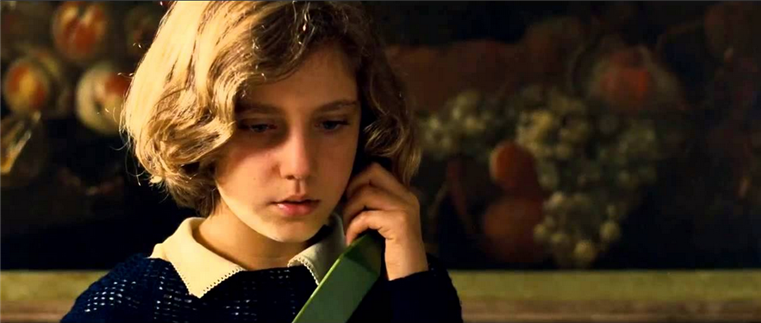
Good Morning – Midnight – I’m coming Home – Day – got tired of Me – How could I – of Him?
Sunshine was a sweet place – I liked to stay – But Morn – didn’t want me – So – Goodnight – Day!
I can look – can’t I – When the East is Red? The Hills – have a way – then – That puts the Heart – abroad –
You are not so fair – Midnight – I chose – Day – But – please take a little Girl – He turned away!
Emily Dickinson
The inaugural EUphoria Film Festival, September 19-24, 2014 at the University of Southern California, celebrated recent cinema from 13 participating countries across the European Union. Hosted jointly by the USC School of Cinematic Arts (where it took place), the respective Los Angeles and San Francisco consulates, and ELMA (European Languages and Movies in America), its program culminated this year with a true highlight of the festival, Susanna Nicchiarelli’s The Discovery of Dawn from Italy.
The film, her second feature, is an adaptation of the first novel by Walter Veltroni, former Mayor of Rome, who also served as a member of Parliament and was a candidate for Prime Minister against Silvio Berlusconi in 2008. Veltroni’s protagonist is an intellectual assigned to read and catalogue diaries at the National Archive, and he seeks to reclaim his own past, broken when his father became missing during a period of political terrorism in late ‘70s Italy. Written in 2006, the book is laced with literary and philosophical observations of Italy’s culture since the ‘70s, especially in the 21st century.
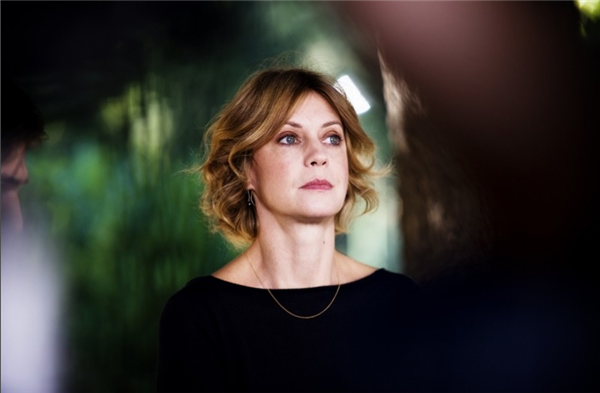
Writer-director-actress Susanna Nicchiarelli centers her story on two women. In 1981 in Rome, a professor is murdered on campus and falls into the arms of his best friend and colleague, who himself mysteriously disappears within days. Flashing forward to 2011, the two daughters of the missing colleague, Caterina (Margherita Buy) and Barbara (the director herself), who were age 6 and 12 as the film opened, must now return to their long-abandoned seaside house and clear it out after their mother’s death. Caterina playfully picks up the receiver of an old telephone there, where the service has long been disconnected, but surprisingly there’s a dial tone, and she calls the number of this old home. A child answers — it’s her 12-year-old self, a week before her father vanished. What might she be able to discover?
The mid-‘70s to mid-‘80s in Italy
saw numerous assaults by the Red Brigade upon public figures no less than Prime
Minister Aldo Moro, who was captured and held hostage for 55 days before his
corpse was found in the trunk of a car in Rome.
Yet The Discovery of Dawn is
more a psychological drama than a political thriller or social identity
story. Nicchiarelli’s time-traveling
device harkens back to The Twilight Zone
series of classic American television, but pervasive in its ambience is
something more — a reconsideration of pop culture and nostalgia. Nicchiarelli employs only faint motifs of
sci-fi, those that quietly insinuate an investigation of the economic status
quo and sociological picture of life for the Italian intelligentsia today in contrast with that of the early 1980s. Are technological innovations in cinema,
television, the graphic arts, and audio recording — let alone those in weaponry
and warfare — taken seriously enough by younger generations?

The film’s central conceit of “telephoning the past” allows a curious entrée into an era when the “Years of Lead” overlapped with the “Age of Plastic.” Enveloping the use of the old-fashioned, dial-up, extension-cord telephone in a soundscape of MTV and aerobics workout videos does more than traverse the gap of three decades from 2011 back to 1981; as pop songs like “99 Luftballons” and “Video Killed the Radio Star” bridge images of Barbara’s modern-day rock band hobbling to auditions in a fall-apart van and Caterina’s beau crafting cartoons by simulating CGI in their cramped apartment, they allow a related theme to hover over the film.
The self-reflexivity of the psyche is layered with a media self-reflexivity on the screen that deepens the texture of each era while it opens a portal of time travel between two other eras, the ‘60s and the ‘80s. The “happy years” of the 1980s came to see a resurgence of the revolutionary politics and utopian dreams of the 1960s. After all, the tumultuous end of the ‘80s was bred in part by artists looking backward and forward across all media and political movements, taking stock of their possibilities in what came to be known as the “’80s New Wave.” That undercurrent sweeps across The Discovery of Dawn with a pace that sometimes excites and at other times soothes the personal narrative, taking stock of the emotional riptide that pulls the two sisters through the film.
The following post-screening Q&A begins with a talk with host-moderator Alexander Ago (AA) and ends with my own (KC) questions for the filmmaker (SN).
Alexander Ago: You based your screenplay on a book by Walter Veltroni, the former Mayor of Rome. Can you talk about that?
Susanna Nicchiarelli: His novel, called The Discovery of Dawn, was published in 2007. My producer found the book and felt it was very American, because of the time travel in it. In Italy we don’t make films like that, but I loved it. The idea of the telephone was universal — everyone can identify with the idea of phoning themselves and changing the past.
At the same time, this was an original way of talking about Italian events. I changed the story a lot, because in the book, the main character is a man and it’s much more dramatic. The novel is really short, about 120 pages, and all an inner dialogue on the part of the person who makes the call, who is an only child. I kept the book’s story that the dad was a terrorist because in Italy we still have a big problem talking about the Red Brigade and terrorists — who was who, and what happened.
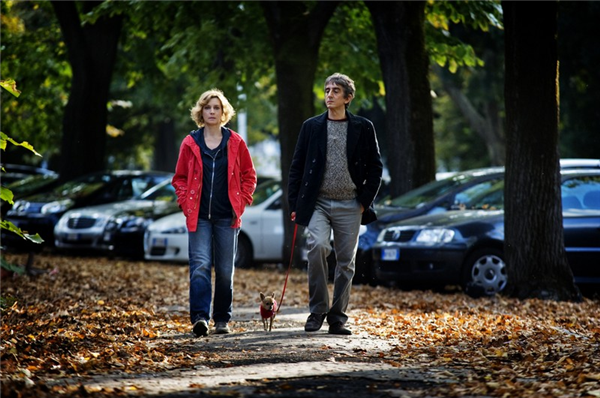
AA How do young people react to your film today?
SN My generation reacts with fear: Will a bomb go off? Will they shoot the dad? For those born after my film takes place, it’s a way of learning something very rapidly. In the book the killing takes place in 1977. For the film I moved it to 1981. The 70s were the “Years of Lead,” as we called them. The 80s were the music video era, a very happy time, as in the song, “Video Killed the Radio Star.” It was the first music video shown on MTV in the U.S., in 1981
In a family, each child reacts differently to pain, so using two sisters let me show two different ways of relating to the past. In both cases, there was a removal of something, and both girls were protecting their mom. When they return to the past, they give her the briefcase. They thought she was too fragile when they were kids, and they kept this secret for 30 years.
Leaving it this way, there’s still the possibility that no one’s on the other end of the phone. We could take science fiction beyond the point we did because we know those things really happened. Maybe the sister was in on it, or it’s true — we don’t know, and it was real stuff.
AA Did you show the film to Walter Veltroni?
SN Yes, he came once, and he said he liked the film. He liked E.T. and Close Encounters, and my film reminded him of those films. He’s not really a novelist — this was his first book — so he didn’t want to read my screenplay or compare it with his work.
AA Tell me about your producer.
SN He’s very creative, very “hands-on.” He’s the one who had the idea of the bag being hidden, of having the time travel and the bag moving back and forth.
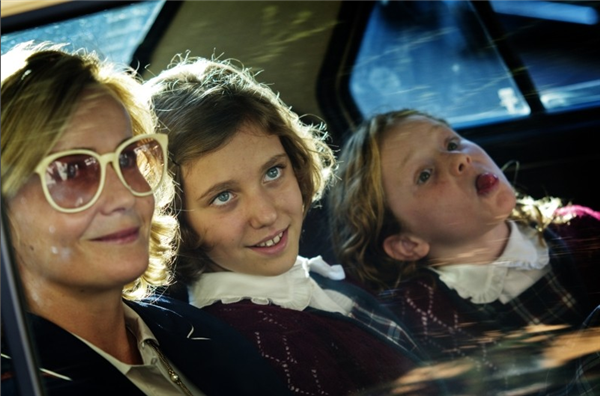
AA Why did you cast Margherita Buy in this film?
SN I think she’s very funny and also good in dramatic roles. In Italy we don’t have actresses who can do both. I think it’s important in science fiction to have irony, distance, as with the last phone call in the film, and Margherita Buy is capable of this.
AA You work with both kids and dogs in your film.
SN No one liked the Chihuahua. We modeled Margherita’s character on the child actress who plays her. The girl is very serious. She and Margherita never met on the set; neither of the doubles met with each other. Something magic happened in the editing. We realized that both Margherita and the girl had the same tick, and the same was discovered for my girl double and me.
AA How did you decide to cast yourself in this film?
SN It wasn’t really a decision; I just did it — even in my last film. I don’t know if it’s the right thing to do, but I have so much fun doing it. I couldn’t be the main character, but I like sharing. Directors who don’t act don’t know the pain an actor feels. I like having the fun and the pain, and I think my films are warmer, more personal, when I act in them.
Directors who’ve never acted can make very cold films. It’s painful to act for the screen. You think you have a big nose, or you’re not good in your role. It’s difficult to be objective when you’re acting. You have to have the right people around you, people you trust, to be kind to you.
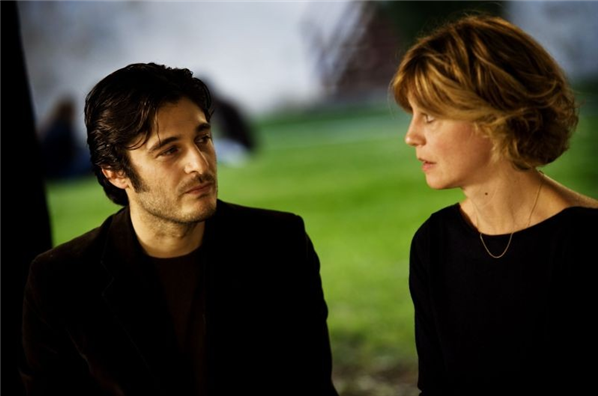
AA What were the challenges of making a movie set in 1981?
SN Everyone should do
it! It’s magic, when people recognize
the objects, like the telephone — the girls couldn’t believe we used to wait
during all that dialing. The Simon and
Simon game was a real find for me. I
wanted the Smurfs,
but they never answered when we called! *
AA Was the Red Brigade still active in 1981?
SN The last assassination was in ’84. The Red Brigade was over, but they kept on killing people.
AA Did you shoot your movie on film?
SN Yes, in December of 2011. Everything changed in two years. It was one of the last movies in Italy to be shot on film.
AA Can you talk about your music?
SN “Video Killed the Radio Star” came out in Italy in 1981. It was the first song that played as a video on Italian MTV. Nena’s “99 Luftballons” was from 1983, so I didn’t include subtitles. Even the Sydne Rome aerobic video was from 1983. Break dancing and the punks were maybe still new in 1983. The song, “99 Luftballons” (later “99 Red Balloons”) was about the Cold War in Germany. They had a problem similar to ours in Italy, and the song is very ‘80s-style, but serious.
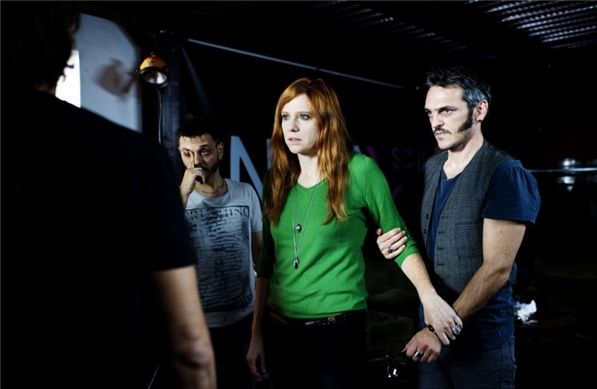
KINOCaviar In your screenplay, why did you decide to stop with the story of the dad and the Red Brigade and instead return to the mom, in the quest to “call” her and protect her?
SN They were abandoned. It’s as the woman out of prison says “Why do you care where he is now? Would it matter?” And now the girls don’t care.
KC Yet children often react to abandonment all their lives, striving to work out emotions of loss, guilt, hate, anger — and the same goes for countries that feel violated. The pain doesn’t always just “go away.” Pursuing the girl’s reactions to what they discover of their father is an opportunity in your film — at both the personal and the political levels.
Did her father’s legacy have anything to do with why she didn’t get the position on the faculty?
SN No, it has to do with the way the country is now. Times have changed in Italy. Now at 35 years of age, her age, you’re no one yet; you’re not considered important, so you get no position. In the late ‘70s and early ‘80s, you were significant enough to be shot. You could be the Dean of Faculty at that age, or the Chief of Police.
The Red Brigade killed judges, journalists, anyone who criticized them — people from society who were just doing their jobs. There’s no justification for killing civilians, in my view. And they were stupid in the ways they went about it and how they did it. I mean, communism can be interesting, but they were superficial.
KC Now you’re reminding me of another Italian film I’ve seen about the Red Brigade, Marco Bellochio’s Good Morning, Night. The title is close to yours, The Discovery of Dawn. Does “dawn” have some special symbolic meaning attached to the ‘80s in Italy?
SN Well,
since my film was based on Veltroni’s novel, I kept the title of the book. And the other title is actually, Good Morning, Midnight. It comes from Emily Dickinson, whom I love.
* The Smurfs were Belgian comic characters (originally 99) who lived in a rather socialistic universe. As indefinable as the word was, the Smurfs were widely merchandized across popular culture in comics from 1958 into the mid-‘80s, musical singles and albums, television series and TV commercials, video games, theme parks, ice skating, UNICEF, toys, balloons, cereals and pastas, DVD box sets, ad campaigns, cartoons, posters, eventually even academic debates, and movies beginning in 1965 with projects slated into 2016.
The Discovery of Dawn
Director: Susanna Nicchiarelli; Producer: Domenico Procacci; Screenplay: Susanna Nicchiarelli, Michele Pellegrini from the novel by Walter Veltroni; Cinematographer: Gherardo Gossi; Editor: Stefano Cravero; Sound: Maricetta Lombardo; Production Design: Alessandro Vannucci; Costumes: Francesca Casciello.
Cast: Margherita Buy, Susanna Nicchiarelli, Sergio Rubini, Lino Guanciale, Renato Carpentieri, Lina Sastri, Sara Fabiano, Anita Cappucci, Lucia Mascino, Gabriele Spinelli.
Color, 35mm, 95min. In Italian with English subtitles.